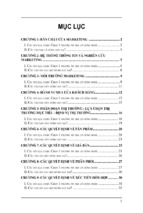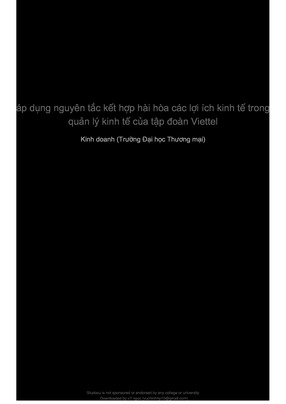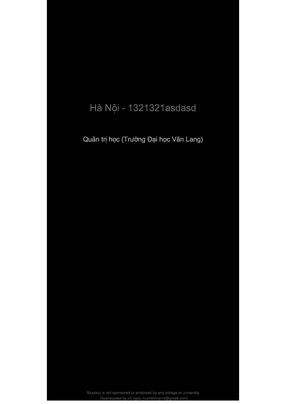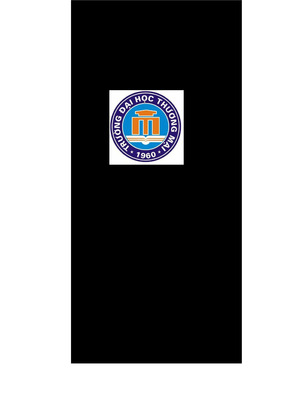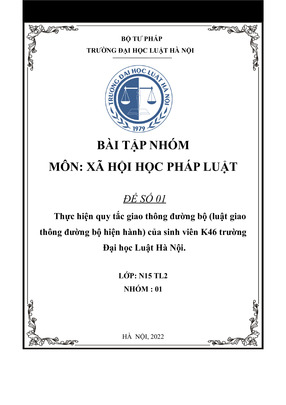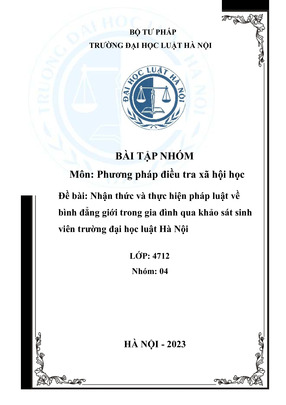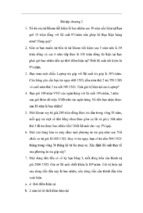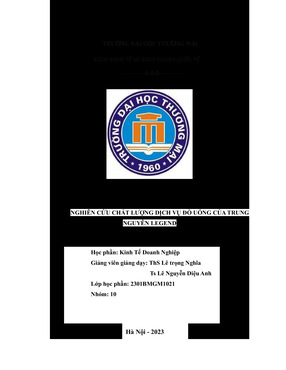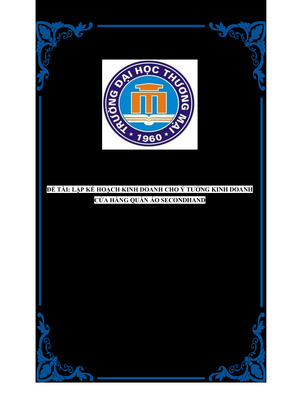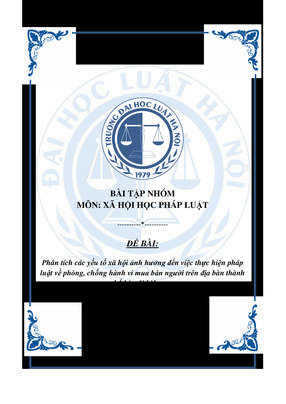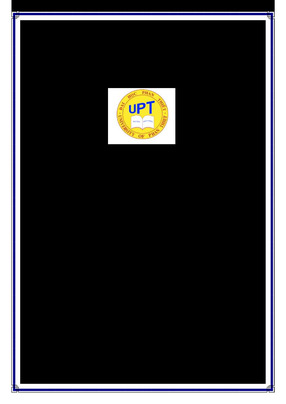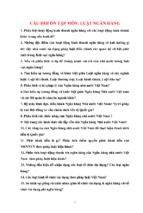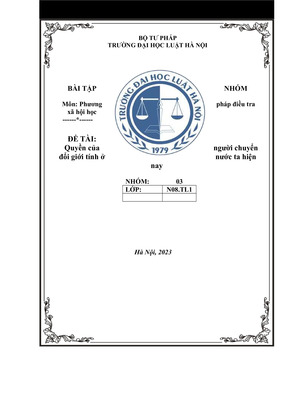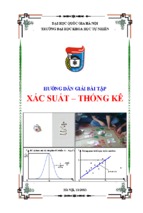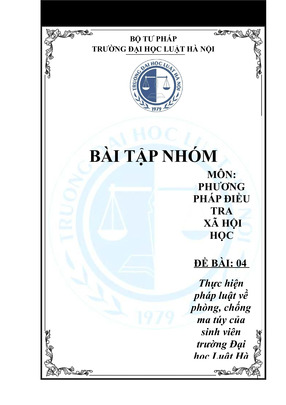PEOPLE‟S COMMITTEE OF BINH DUONG PROVINCE
THU DAU MOT UNIVERSITY
---------------------
HUYNH THI UT
THE FIRST LANGUAGE SYNTACTIC INTERFERENCE IN
ENGLISH WRITINGS OF FIRST-YEAR ENGLISH MAJORS
AT BAC LIEU UNIVERSITY
MASTER THESIS
MAJOR: THE ENGLISH LANGUAGE
CODE: 8220201
Supervisor: Assoc Prof Dr. HOANG QUOC
BINH DUONG - 2018
i
DECLARATION
The thesis entitled “The first language syntactic interference in English writings
of first-year English majors at Bac Lieu University” is conducted under the supervision
of Assoc. Prof & Dr. HOANG QUOC. I declare that the information reported in this
paper is the result of my own work, except where due reference is made. The thesis has
not been accepted for any degree and is not concurrently submitted to any candidature
for any other degree or diploma.
Huynh Thi Ut
December, 2018
i
ACKNOWLEDGEMENTS
Firstly, I would like to express my deepest and heartfelt gratitude to my
supervisor, Assoc. Prof & Dr. HOANG QUOC, who gave me invaluable inspiration,
support, devotion, and careful guidance as well as patience through the whole course of
my research. He is very enthusiastic, responsible and principled supervisor. Before I
had begun to do the research, he offered me a schedule to follow. He devoted his
precious time to read and give me perceptive feedback as well as comments and
suggestions on the previous drafts of each chapter. Without him, the current study
could not have seen the light.
My sincere thanks will be surely dedicated to all my lecturers of the Master
program for their profound knowledge, whole-hearted instructions and great
enthusiasms.
I also acknowledge Mr. Lien Trong Nghia, an English teacher of Foreign
Language Division, BLU, who instructed me initial steps to use SPSS program for data
analysis.
My thanks are due to my beloved students in the English Linguistic and
Literature classes, at BLU, who involved in my thesis. Without their assistance, my
study could not have been conducted. I am also grateful to my colleagues at the
English Division, BLU, who gave me good conditions during the time I followed the
M.A. course. All of their help meaningfully contributed to the completion of my study
in the master program.
Finally, I would like to thank my family, especially my husband, who was
always by my side when I was in difficulties and gave me mental support as well as
great encouragement and motivation during my M.A. program.
ii
ABSTRACT
Extensive studies have been conducted regarding mother tongue (L1) interference
and developing English writing skill. However, this study aims to investigate the
influence of the Vietnamese language on English (L2) writing at Bac Lieu University
(BLU), specially refer to syntactic aspects. The literature review of the study is planned
in two chapters where a theoretical background of the research area is discussed.
Besides, the study is conducted by adopting James‟ Error Taxonomy and following the
procedures of error analysis (EA): collecting samples of learner language, identifying,
describing, and explaining. In addition, to achieve the aims, the research method
adopted for this piece of work a questionnaire that is administered to forty students as
well as an interview for four students of Bac Lieu University. Moreover, the instrument
for data collection was a written test in which students were asked to write a passage.
The samples were gathered and analyzed based on their syntactic features. The results
from this study indicate that the most common Vietnamese interference errors were
tense, misuse of preposition, article, omission “be” and word order. It could be
concluded those errors emerged mostly due to the influence of their native language.
On the basis of the results obtained, some implications and recommendations have
been proposed to help students overcome their difficulties in order to improve
their writing skill, and others to help teachers in their way of teaching the writing
skill.
Key Words: Interference; Syntactic; Contrastive Analysis.
iii
TABLE OF CONTENTS
DECLARATION .............................................................................................................i
ACKNOWLEDGEMENTS ...........................................................................................ii
ABSTRACT .................................................................................................................. iii
TABLE OF CONTENTS .............................................................................................. iv
LIST OF TABLES .......................................................................................................vii
LIST OF FIGURES ................................................................................................... viii
LIST OF ABREVIATIONS ......................................................................................... ix
Chapter 1 ......................................................................................................................... 1
INTRODUCTION .......................................................................................................... 1
1.1 Background to the study .......................................................................................... 1
1.2 The problem statement ............................................................................................ 3
1.3 The aims of the study ............................................................................................... 4
1.4 Research questions ................................................................................................... 4
1.5 Significance of the study .......................................................................................... 4
1.6 Scope of the study ..................................................................................................... 5
1.7 Organization of the study ........................................................................................ 5
1.8 Definitions of key terms ........................................................................................... 6
Chapter 2 ......................................................................................................................... 8
LITERATURE REVIEW .............................................................................................. 8
2.1 The Theory of Interlanguage .................................................................................. 8
2.2 Definition of Interference/ Transfer ....................................................................... 9
2.3 Types of Transfer ................................................................................................... 10
2.3.1 Positive transfer ................................................................................................. 10
2.3.2 Negative transfer ............................................................................................... 10
2.4 Contrastive Analysis (CA) ..................................................................................... 11
2.5 Error Analysis (EA) ............................................................................................... 12
2.6 Definition of Errors ................................................................................................ 13
2.7 Significance of Errors ............................................................................................ 14
2.8 Errors versus Mistakes .......................................................................................... 14
2.9 Sources of Errors.................................................................................................... 15
iv
2.9.1 Interlingual errors .............................................................................................. 16
2.9.2 Intralingual Errors ............................................................................................. 18
2.10 Classifications of Errors ...................................................................................... 19
2.11 Model of Error Analysis ...................................................................................... 21
2.11.1 Collection of a sample of learner language ..................................................... 21
2.11.2 Identification of Errors .................................................................................... 21
2.11.3 Description of Errors ....................................................................................... 22
2.11.4 Explanation of Errors ...................................................................................... 22
2.12 Contrastive analysis of Vietnamese and English syntactic .............................. 22
2.12.1 Contrastive analysis of Vietnamese and English Tense ................................. 22
2.12.2 Contrastive Analysis of Vietnamese and English Preposition ........................ 23
2.12.3 Contrastive Analysis of Vietnamese and English Articles ............................. 25
2.12.4 Contrastive Analysis of Vietnamese and English Word-Order ...................... 26
2.12.5 Contrastive Analysis of Vietnamese and English Omission “Be”.................. 27
2.13 Previous studies .................................................................................................... 27
2.14 Summary ............................................................................................................... 29
Chapter 3 ....................................................................................................................... 31
RESEARCH METHODS ............................................................................................ 31
3.1 Research design ...................................................................................................... 31
3.2 Research context: Bac Lieu University ................................................................ 31
3.3 Participants ............................................................................................................. 32
3.4 Writing Curriculum ............................................................................................... 33
3.5 Research instruments............................................................................................. 34
3.6 Data collection Procedure...................................................................................... 37
3.7 Data analysis ........................................................................................................... 40
3.8 Validity and reliability ........................................................................................... 41
3.9 Summary ................................................................................................................. 42
Chapter 4 ....................................................................................................................... 43
DATA ANALYSIS AND DISCUSSION .................................................................... 43
4.1 Introduction ............................................................................................................ 43
4.2 Analysis of Students’ Questionnaire .................................................................... 43
4.2.1 Students‟ Attitude about Their Writing in English ........................................... 43
v
4.2.2 Students‟ Errors in Grammar ............................................................................ 45
4.2.3 Students‟ Writing Learning Strategies .............................................................. 46
4.2.4 Students‟ Perception on the Influence of Mother Tongue on English Writing 48
4.3 Questionnaire Result Discussion ........................................................................... 50
4.4 Analysis of Students’ Interview ............................................................................ 52
4.5 Students’ Compositions: Analysis and Discussion .............................................. 56
4.5.1 Students‟ Syntactic Errors ................................................................................. 56
4.5.2 The Cause of Syntactic Errors in Students‟ Writing ......................................... 65
4.6 Summary of the Findings ...................................................................................... 68
Chapter 5 ....................................................................................................................... 71
CONCLUSIONS, IMPLICATIONS, LIMITATIONS
ANDRECOMMENDATIONS .................................................................................... 71
5.1 Conclusion ............................................................................................................... 71
5.2 Implications ............................................................................................................ 72
5.3 Limitation of the research ..................................................................................... 72
5.4 Recommendations .................................................................................................. 73
REFERENCES ............................................................................................................. 75
APPENDICES .............................................................................................................. 80
vi
LIST OF TABLES
Table 3.1: Background Information of the Participants .................................. 33
Table 4.1: Students’ Attitude about Their Writing in English ........................ 43
Table 4.2: Students’ Errors in Grammar .......................................................... 45
Table 4.3: Types of Errors in Grammar ............................................................ 46
Table 4.4: Students’ Writing Learning Strategies ............................................ 47
Table 4.5: Students’ Perception on the Influence of Mother Tongue on
English Writing .................................................................................................... 49
Table 4.6: Total number of first year students’ syntactic errors .................... 56
Table 4.7: Preposition Errors ............................................................................. 58
Table 4.8: Article Errors ..................................................................................... 61
Table 4.9: Interlingual vs. Intralingual transfer errors ................................... 65
Table 4.10: Total number of interlingual errors ............................................... 67
Table 4.11: Total number of intralingual errors ............................................... 68
vii
LIST OF FIGURES
Figure 4.1:Total number of first year students’ syntactic errors ................ 57
Figure 4.2: Interlingual vs. Intralingual transfer errors .............................. 66
viii
LIST OF ABREVIATIONS
BLU: Bac Lieu University
CA: Contrastive Analysis
EA: Error Analysis
EFL: English as a Foreign Language
L1: First Language
L2: Second Language
NL: Native Language
TG: Target Language
SLA: Second Language Acquisition
ix
Chapter 1
INTRODUCTION
Chapter 1 describes in detail (1)Background to the study, (2) the rationale for the
study, (3) the aims and the objectives of the research, (4) the significance of the
research, (5) the scope of the research, (6) the research questions, and (7) the
organization of the thesis.
1.1 Background to the study
Writing is often considered an indispensable skill that enables students to develop
an appropriate level to communicate with people from different backgrounds and for
different purposes. It is widely accepted that writing in English is becoming a useful
way of international communication. It is used by millions of native and non-native
speakers to communicate with each other. According to Harmer (2004), due to writing,
students can express their ideas in written form and gain a high level of
communication. As such, English writing is becoming more demanding in the age of
globalization where people entirely communicate via email and other communicative
technologies and writing is inevitably required to be used as an effective tools at
workplace or organizations where international cooperation is taken place. In the
Vietnamese context, writing in English as a foreign language (EFL) becomes a primary
concern for university students because they need this skill in their academic life (e.g.
studying abroad, understanding academic information, international business, tourism,
entertainment, scientific research, politics and so forth). For this reason, many
universities provide writing courses which are compulsory subjects for students to
register. Writing is part of the university curriculum taught to those who are in English
major.
However, of the four English skills, writing has been found to be a complex process
for EFL learners to master (Watcharapunyawong & Usaha, 2013). Producing a piece of
writing with coherence and fluency is the most difficult activity to do in language
learning (Nunan, 1999). In addition, the difficulties lie in the process of finding ideas
and converting the ideas into comprehensible texts, and writing requires some
1
skills such as grammar, vocabulary, punctuation, and spelling (Richard &
Renandya, 2002). Therefore, it is unavoidable to find errors made by this group of
learners in acquiring English writing skill. There are several factors that affect writing
learning process and a considerable number of studies have been conducted to find out
causes of writing problems (Penny, 2001; Bennui, 2008; Watcharapunyawong &
Usaha, 2013; Hinnon, 2014). Some studies indicate that there tends to be interference
from students‟ first language (L1) in the process of writing in English (Benson, 2002;
Collins, 2002; Chen & Huang, 2003). L1 interference with regard to the terms “crosslinguistic and language transfer” refers to the influence of native language structures on
students‟ performance and development in the target language (Hashim, 1999). As EFL
students write in the English language, they transfer previous or existing knowledge of
the mother tongue into the target language (TL). Therefore, the errors of native
language interference are likely to be shown in the learners‟ written productions.
Second language learners produce pieces of writing containing incorrect grammar
structures as well as inappropriate vocabulary items due to direct translation from L1
into English. In the last decade, several studies have been carried out across the world,
which have proved that the interference of the mother tongue is a severe problem in
EFL and ESL writing contexts. Bhela (1999) investigated L1 interference in L2
writing. The participants are from four different contexts, including a Spanish, a
Vietnamese, a Cambodian, and an Italian student who were asked to write stories in
their native language and in English. The findings indicated that the learners frequently
use structures in their mother tongue when producing structures in the target language.
Due to L1 influence, the learners produced ineffective written stories with
inappropriate structures. Abisamra (2003) also carried out a research that focused upon
studying ten essays written by Arabic-speaking EFL students in their ninth grade. After
analysis, she found that the major cause of their committed errors were negative L1
transfer 'interference' and intralingual interference.
Similarly, Vietnamese learners face many difficulties to learn writing skill due to a
lot of the grammatical dissimilarities between the MT (Vietnamese) and the TL
2
(English). Most of them may be so familiar in their mother tongue considered to
understand the grammatical system when they make English grammar. Learners‟ first
language (L1) may have significances on the second language (L2) acquisition. At Bac
Lieu University (BLU), many previous studies have been done but mainly focused on
teaching methodologies. Studies concerning L1 syntactic interference have not done
yet. In fact, the English majors are expectable to be able to use grammar correctly but
many grammatical errors have been found in their past exam papers of writing. It
seems that the misuse of syntax due to students‟ mother tongue has not been treated
effectively and it has partly showed the failure of the language acquisition.
1.2 The problem statement
Like any other learners of English, BLU learners have several problems with
Vietnamese language interference when writing in English. From the teaching
experiences and the interviews with four English-major students at BLU, the researcher
of this current study has found that English-major students have great difficulties in
writing courses and they are unable to produce a written production without
committing an error. Through the language writing process, BLU students seem to rely
on their mother tongue (Vietnamese) when they produce written pieces in English. As
a result, the interference of L1 language causes them to commit various types of
linguistic errors, specifically the acquisition of syntactic aspect. There are a lot of
grammatical errors in their compositions which cannot convey what the writers would
like to express. That is to say, the mother tongue interfered the students‟ L2 writing,
which eventually reduced the effectiveness of their writing. Carefully considering BLU
students‟ problems of English writing, the researcher assumes that it can be a big
challenge for the writing teachers in the context of BLU to find a wide range of
methods to accomplish effective strategies of teaching English writing. What they need
to do is firstly devoting themselves to help the students effectively develop their
writing skill. Moreover, the teachers attempt to explore the kinds of interference errors
in students‟ English writing and classify their writing errors into different categories as
well as analyze the reasons. The researcher considers that only through understanding
3
the L1 influence in the process of EFL writing, teachers can indicate students'
difficulties in learning English and adopt appropriate teaching strategies to help EFL
students to learn English writing skill better. This is the reason why the research on
“The first language syntactic interference in English writings of first-year English
majors at Bac Lieu University” has been carried out for this study. It is expected that
the findings gained from this study will help BLU teachers to find out appropriate
approaches and methods that can assist students to enhance their writing accuracy.
1.3 The aims of the study
The present study generally aims to investigate the interference of Vietnamese
syntactic structures into English writings made by BLU learners. More specifically,
this study has two main objectives: (1) to explore the types of syntactic errors
committed by BLU learners, and (2) to investigate to what extend syntactic errors
committed by BLU learners due to their mother tongue‟ syntactic structures. The main
focus of the study is on the syntactic errors committed by these EFL learners, which
helps to see whether there is a relationship between students‟ mother tongue and the
grammatical errors they make in their English writings. Besides, the research discusses
the pedagogical implications for teaching English writing to students in Vietnam. It
will be useful for many writing teachers to take into consideration the problem of L1
interference so that they will have some strategies that could help students to lessen
basic mistakes when writing in the L2 as well as to focus their attention on the content
and thus give way to academic writing.
1.4 Research questions
In order to achieve the aims and objectives of the study, the research questions
below would be answered.
1. What types of syntactic errors in English writings are made by BLU students?
2. To what extent do these syntactic errors come from the syntactic structures of the
mother tongue?
1.5 Significance of the study
4
This research is expected to be useful and significant for English learners at BLU
in identifying the main types of syntactic interference errors they encounter while
writing English language. Investigating and analyzing the common errors of BLU
learners in writing is very essential to know the weaknesses of students. Knowing the
most serious syntactic errors made by BLU learners makes the teachers give more
attention to them and take them into account for enhancing the writing skill of EFL
students at BLU. In addition, the findings of the study can be necessary for future
studies, which would contribute to the field of academic writing.
1.6 Scope of the study
Due to the limited time and the restricted scope of the thesis, this study focuses
on first-year English major students at BLU. It analyzes 80 compositions written by
first-year students. In addition, this study could not cover all types of errors. Only the
syntactic errors in the compositions are taken into consideration, thereby proposing
some pedagogical suggestions for teaching and learning writing skill at BLU.
1.7 Organization of the study
The thesis consists of five main chapters as follows:
Chapter 1 has presented a statement of the problem concerned to students‟
mother tongue interference in writing in the context of BLU. The background
information on the problem and the reasons to conduct the research are also presented
to assert that the problem being addressed is researchable. It then introduces the aims,
the significance of the research and the research questions. Finally, the thesis
organization is mentioned in the last section of the chapter.
The literature review presented in chapter 2 first attempts to clarify some
concepts used in the thesis. Besides, a number of related interference studies and the
studies on the relationship between interference and writing are cited. The review
concludes with a brief summary of the studies and their implications in EFL writing
classes.
Chapter 3 focuses on the research method which describes the research design
and procedures, the populations, the samplings and the materials used in the study. A
5
detail description of the instrument for the data collection was followed by an
explanation of how the data were analyzed.
Chapter 4 studies the results and analyzes the collected data of the
investigation. Firstly, it reveals the results of the questionnaires analyzed by SPSS
16.0 which presenting students‟ attitudes and behaviors towards learning English
writing. Secondly, this is to answer the research questions about the possible kinds of
syntactic interference errors BLU students usually make in their English writing.
The last chapter summarizes and interprets the main results of the study. It
also discusses the theoretical and practical implications of these findings. Finally, the
limitations of the research and recommendations for further research are addressed.
1.8 Definitions of key terms
- Syntactic errors refer to using incorrect grammar structures when they are
required as defined.
- Bac Lieu University (BLU) is a small university of Bac Lieu Province in the
Mekong Delta where the researcher did this study.
- CA (Contrastive Analysis) is the careful study of two languages with the
intention of identifying their structural dissimilarities and similarities.
- Error analysis (EA) is defined as the systematic study of the errors that occur
while the learner uses the Target Language. It can be viewed as a means of finding a
shortcut to the analysis of the learner‟s difficulties in second/foreign language
learning, listing, and classifying of the errors contained in a sample of learner´s speech
or writing.
- Foreign language: any language used in a country other than one's own; a
language that is studied mostly for cultural insight.
- First Language acquisition (L1): is the natural process in which children
subconsciously possess and develop the linguistic knowledge of the setting they live
in.
- Interlingual errors are those that result from a language transfer that is caused
by the interference of L1 into L2.
6
- Intralingual errors are those that result from faulty or partial learning of L2,
rather than from language transfer.
- Interlanguage is the type of language (or linguistic system) used by second
and foreign language learners who are in the process of learning a target language.
- Interference: refers to the speaker or writer applying knowledge from their
mother tongue to a second language.
- Language transfer (also known as L1 interference, linguistic interference, and
cross meaning) refers to speakers or writers applying knowledge from their native
language to a second language.
- Mother tongue is the language that a person has grown up speaking from
early childhood.
- Target Language (TL) is the language learners are studying, and also the
individual items of language that they want to learn, or the teacher wants them to
learn.
7
Chapter 2
LITERATURE REVIEW
This chapter deals with the general framework, which examines five major
issues related to the phenomenon of interference. Firstly, there is an analysis of the
concept of "interlanguage" in various studies. Secondly, an overview of the notion of
interference or transfer, its historical background and its main characteristics are
reviewed. Then, there is a review of the most important theories that have tackled the
issue of L1 interference or transfer. Primarily, it is Contrastive Analysis (CA). Finally,
the concepts of Error Analysis (EA), the nature of errors and their potential causes are
reviewed and thoroughly explained.
2.1 The Theory of Interlanguage
The term “interlanguage” has a great impact on the field of L2 acquisition. It is
defined as "a system that has a structurally intermediate status between the native
language (NL) and target language (TL)" (Brown, 1994:203). In other words,
interlanguage is neither the system of the NL nor the system of the TL. Richards and
Schmidt (2002:267) explain it as a different system from both the NL and the TL.
Selinker (1972:214) states that "The existence of a separate linguistic system based on
the observable output which results from a learner's attempted production of a TL
norm. This linguistic system we will call 'interlanguage' (IL)". Selinker proposes the
notion of "interlanguage" as a linguistic system with its own rules, which bases on the
learner‟s attempts to interact with his/her new surroundings in the TL. Hence, for
Selinker, the linguistic system produced by the learners is considered as a whole set of
language rules that constitute a natural language, which includes the comprehension
among its speakers.
Selinker (1972:210) lists five factors, which might cause the output of
interlanguage:
8
(1) Language transfer: fossilizable items, rules, subsystems that occurred in the
interlanguage because of transfer from the native language.
(2) Transfer of training: items resulting from particular approaches used in
training.
(3) Strategies of second language learning: identifiable approaches by the
learner to the material being learned.
(4) Strategies of foreign-language communication: identifiable approaches by
the learner to communicate with native speakers of the TL.
(5) Overgeneralization of TL linguistic material: overgeneralization of TL rules
and semantic features.
2.2 Definition of Interference/ Transfer
Since interference (transfer) is considered to be an important factor in studies on
second language acquisition and language teaching, different scholars give their
different understandings about it and focus on its different aspects, resulting in a
number of definitions about interference.
Language interference, also known as cross-linguistic interference or transfer, is
"the influence resulting from similarities and differences between the target language
and any other language that has been previously acquired” (Odlin 1989: 27). Learners,
particularly in the first stages of L2 acquisition, usually transfer items and structures
based on the influence of their L1. Odlin (1989) regards the influence as interference or
negative transfer (i.e., when L1 interferes with the acquisition of
L2), and
positive transfer (i.e., when L1 assists the acquisition of L2).
Besides, Richards and Schmidt (2002:267) define interlingual (interference)
errors as being the result of language negative transfer, which is caused by the learner‟s
first language influence. This occurs at different levels such as transfer of phonology,
grammatical and lexical - semantic elements of the native language into the target
language.
9
Additionally, Ellis (1994:51) refers to interference as „transfer‟, which he says is
“the influence that the learner‟s L1 exerts over the acquisition of an L2”. This above
definition clarify that in learning the TL, learners tend to use some of the rules they
have already acquired in L1 in the production and understanding of L2. This means
that they exert some influences using L1 over L2. This influence is frequently apparent
in the errors committed by learners either orally or in writing. According to Ellis
(1994) learners have a tendency for the use of their L1 knowledge because they believe
it will help them in the learning task or become sufficiently proficient in the L2.
Expressing the same belief, Lott (1983:256) defines interference as „errors in the
learner‟s use of the foreign language that can be traced back to the mother tongue‟. As
Lott (1983) suggests, by analyzing the students' errors, teachers can find out the causes
of these an error, for example, mother tongue interference, or teaching techniques, or
problems inherent in the target language.
To sum up, many definitions have been given to the term “interference”.
However, Ellis (1994) gave a comprehensive definition of interference. According to
the current study, interference is “the influence that the learner‟s L1 exerts over the
acquisition of an L2” (Ellis, 1994:51).
2.3 Types of Transfer
Transfer is studied in two categories: negative transfer and positive transfer.
2.3.1 Positive transfer
Positive transfer is considered as an important part of L2 learning. It helps
learners acquire knowledge more easily and function effectively in situations where
they could solve the problems they have never seen before. Ellis (2000:300) maintains
that “if the two languages are identical learning can take place easily through „positive
transfer‟ of the native language pattern”. For Ellis, the similarity in language features
can be a facilitative effect to the acquisition of L2.
2.3.2 Negative transfer
Corder (1973:132) states that “the most known source of foreign language
learning errors is that of L1transfer”. According to Corder (1973), L1 interference is a
10
- Xem thêm -


